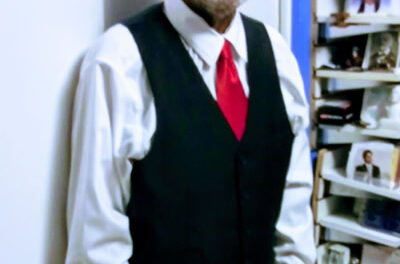Rachmaninoff’s beloved Piano Concerto No. 2 headlined the Winston-Salem Symphony‘s first concert of the new year. Leading the evening of fine music making was WSS Music Director Robert Moody; at the Steinway was the virtuoso pianist Orli Shaham.
Rachaminoff’s Concerto in C Minor was an immediate success when it was first performed with the composer at the piano in 1901. The three-movement work has become one of the great warhorses of the literature, and for good reason. The ultra-romantic composition abounds in sumptuous melodies, rich chromatic harmonies, brilliant orchestration, and a fiendishly difficult piano part that awes the listener. Saturday night’s performance was a winner on all accounts.
From the opening rolled chords, it was clear that Shaham is a powerful player and her interaction with the orchestra was first-rate. Maestro Moody’s close attention to the soloist’s shaping of the phrases strengthened the great collaboration, which resulted in a seamless presentation of the passionate piece.
The pianist’s delicate playing was exquisite, inviting the listener into a more intimate world. I found the “march” section of the first movement to be a bit staid, but that’s a matter of personal taste. At the end of the first movement, a climactic conclusion, the audience sat silent, enraptured. Shaham turned on the bench and said, “You’re too well-trained. Rachmaninoff intended for you to wildly applaud after that!” To which the large audience gleefully clapped its approval.
The second movement is a melodic foray into languid lyricism, with Bach-like piano noodling, soft sustained string accompaniment, and drop-dead gorgeous wind melodies. Wonderful playing from all!
The finale is a virtuosic romp with a giant Hollywoodesque theme first presented by the cellos, and eventually taken up by all forces. It’s this tune that most listeners take away; sometimes it seems a bit overblown, but in Saturday night’s performance, it came naturally, as a result of the music that preceded it. A final “hoorah” concluded the concerto, and the audience leapt to its feet in appreciation.
The Kicked-Back series is designed to engage the audience, so before the performance of the Rachmaninoff, Moody chatted up Shaham…: “tell us a little bit about yourself….” So we found out that both her parents are scientists, her brother is the violinist Gil Shaham. She viewed the concerto as collaboration between the piano and orchestra rather than a battle. All of this was interesting and insightful, but I’m not sure I’d want to have a social moment before I was to play such a work as the Rachmaninoff!
The concert opened with Fantasia on a Theme by Thomas Tallis by Ralph Vaughan Williams, written for two string orchestras and string quartet. The instruments were arranged on the stage as the composer had intended: the quartet cradling the podium, the large orchestra immediately behind and towards the left, and the small orchestra in the rear to the right. The effect was a three-level antiphony that was impressive.
Part of the intent of Saturday night’s “Kicked-Back Classics” is to present the same music as at the more traditional Sunday and Tuesday concerts, but “with enhanced visual projections and lighting.” So the Vaughan Williams piece began with a projection (and a recording) of the Tallis hymn upon which the Fantasia is based – a great intro to the work proper.
This is a haunting piece, with impressive echoes from the small orchestra, superb playing by the quartet – Corine Brouwer and Fabrice Dharamra, violins, Simon Ertz, viola, and Anne Sellitti, cello – and a full, rich and warm timbre from the large orchestra. Throughout the work various images were projected on the screen that hung above the orchestra, including the seating arrangement of the orchestra and pictures of notable cathedrals from England.
Felix Mendelssohn’s Symphony No. 5, in D Major (“Reformation”), is a four-movement work intended to “commemorate the tercentenary of the Diet of Augsburg (1530), the conference that established the basic tenets for the Lutheran faith.” (thanks to extensive program notes by David B. Levy). Mendelssohn didn’t complete the symphony in time, however, and the first performance took place in 1832.
A slow introduction, which includes a couple of gentle statements of the “Dresden Amen” leads into the Allegro first movement, which is, interestingly, mostly in D minor. The projections? A running narrative program about what the music might mean (this was less successful than in the Vaughan Williams to this listener).
The second movement Allegro vivace is one of those wonderful Scherzos for which Mendelssohn is justly famous. A lyric Andante follows. The Finale is based around the great Martin Luther hymn “Ein feste Burg ist unser Gott” (“A Mighty Fortress is our God.”). Impressive playing from the brass was especially noticeable.
I admire Maestro Moody’s music making very much – he often tries to explore unfamiliar interpretations at the phrase level, searching for inner voices and dramatic punctuations. Sometimes his gesturing from the podium, however, seems to create no noticeable change in playing from the orchestra.
The evening was dedicated to Helen Copenhaver “Copey” Hanes, who died last year at the age of 96. She was a steadfast arts supporter in Winston-Salem and certainly a fitting dedicatee.
This program will be repeated Feb. 9 and 11. For details, see the sidebar.











